Kale belongs to the mustard or cabbage family. The other members of its family are cauliflower, turnip, broccoli, Brussel sprouts, kohlrabi, and canola. If you want to eat a healthy diet, you should add these leafy green vegetables to your diet plan.
If you are facing the problem of shortage of space then growing kale in a pot is the best option. The health benefits of kale force you to grow kale.
When To Grow Kale?
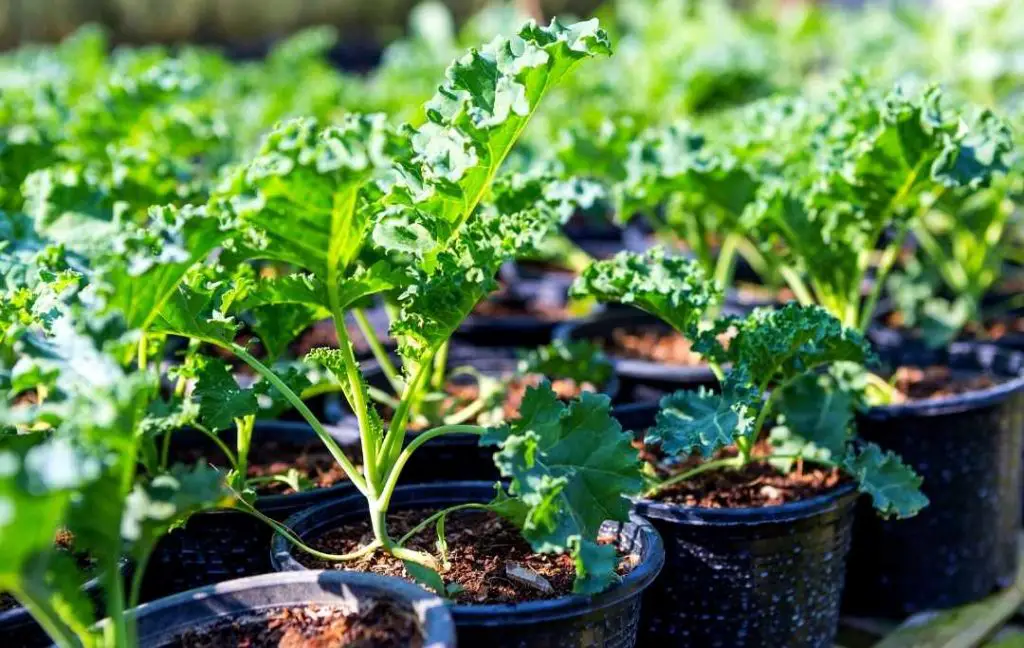
Kale is a powerhouse of all the important nutrients and you can grow them in your garden to get all the benefits of it. Cold climate is perfect for growing kale because it is a frost-hardy crop.
The best temperature for growing kale is 20°F or -5°C. If you live in a cold climate, you can plant kale in early spring, but for a mild winter region, fall is a perfect time. For hot climates, you should plant it in late summer.
Best Type Of Kale
For small spaces, you should select dwarf varieties of kale so they can easily adjust in the pot. For larger or oversized plants you have to arrange light, nutrients, and water.
1- ORNAMENTAL KALE
You can also use this variety for ornamental purposes. The rosettes are found in different shades such as red, pink, purple, and white. The leaves of this plant look tremendous.
2- SIBERIAN KALE
The rubbery texture of leaves and yellow flowers make this variety attractive. The taste of this leafy green plant is very mild and looks like turnips.
3- RED WINTER
This is a Russian variety that has green leaves and reddish-purple stems. This variety provides continuous harvest. If you want delicious flavors then you can eat them at the microgreen stage.
4- VATES BLUE SCOTCH CURLED
This is an heirloom variety with attractive and deeply cut leaves. The edges of the leaves are curled. Best for the cold climate and has a rich flavor. You can use them in salads, smoothies, soups, and stir-fries.
5- REDBOR KALE / PURPLE KALE
The color of leaves of this variety is purple-red. The flavor of the leaves is just like a cabbage. You can eat them both raw or cooked. This plant has a beautiful look that’s why it can be used as an ornamental plant.
Choosing A Pot Or A Container
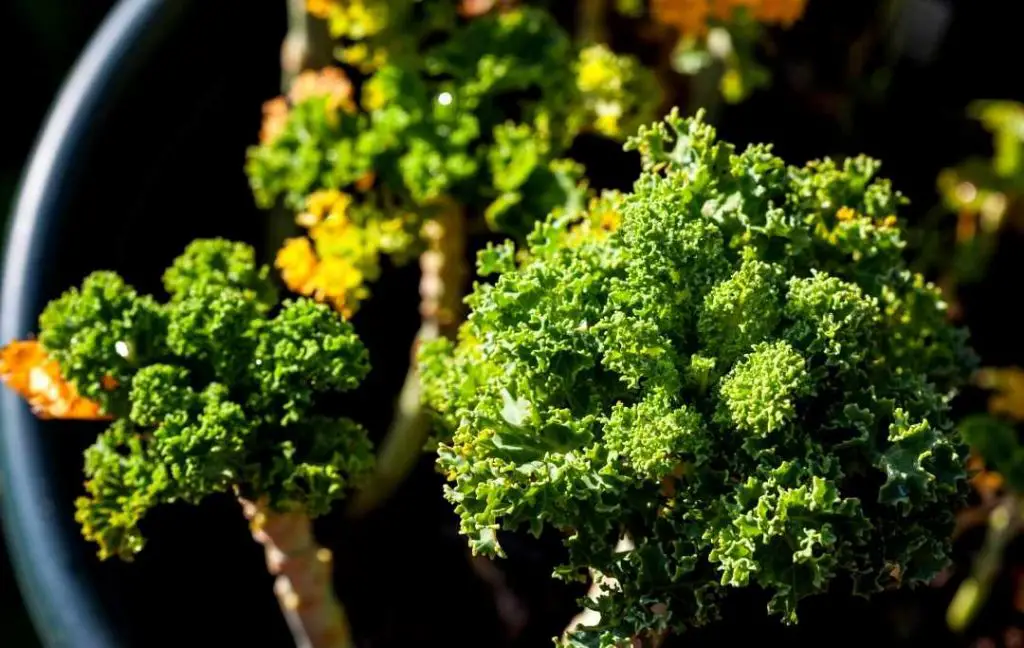
After deciding the variety, the next step is selecting the right pot or container. Your path must have room for your kill plants. An 8 to 12 inches pot or container is enough for growing kale.
Drainage is very important for the plants so your pot must have drainage holes at the bottom. The reason for root rot is due to excessive standing water. This will happen if your pot has no drainage holes.
Fill Your Pot
You should use adequate drainage material for well-drained soil if you want to protect your plants from root rot. Root rot will become the reason for plants failure in a pot.
Drainage materials make it possible for water to seep freely out of the pot. The suitable drainage materials are broken pottery, paper towels, pine cones, coffee filters, coconut coir, mesh window screening, small stones, and sphagnum moss. Before adding the soil, you should place this material at the bottom of the pot.
Rich Soil is recommended for your kill plants. As you are growing your kill plants in pots then you can maintain the fertility of the soil very easily. You should use lightweight soil and any potting mix with perlite, coconut husk, manure or compost, and peat moss.
Read More
- How To Grow Your Salad Greens Without A Garden
- How To Grow Spinach In A Raised Bed
- 20 Best Vegetables To Grow In Buckets
How To Grow Kale In A Pot?
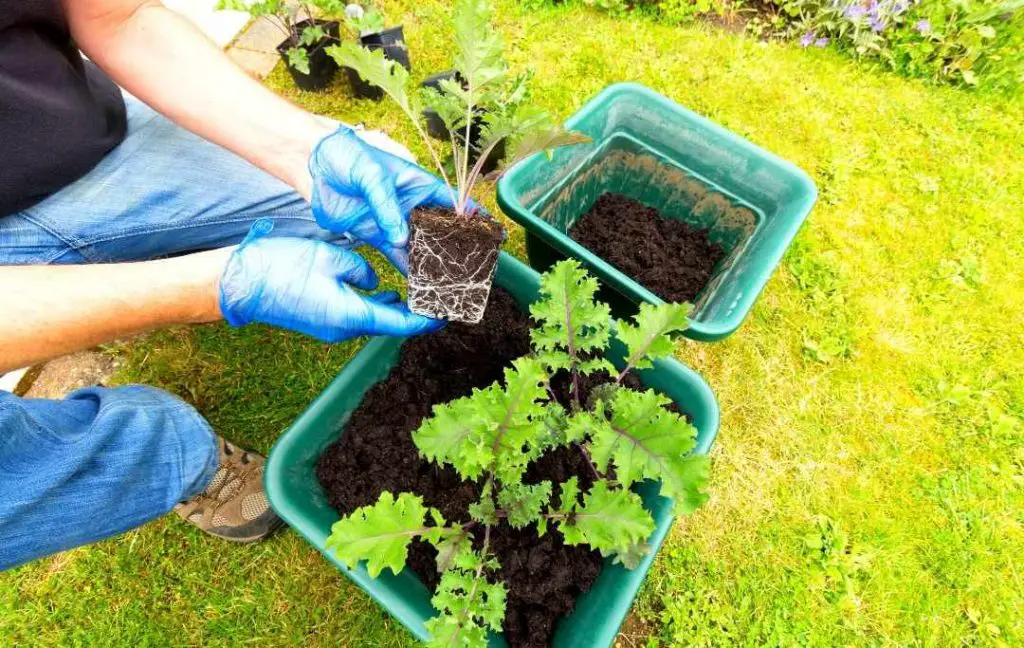
You can grow kale from seeds. As it is mentioned, the best planting time for kale is spring because your plant must mature before the summer’s heat sets in. You can start seeds indoors about 6 weeks before the last frost in your area.
If you are living in a mild winter area then you can sow the seeds from fall to early Spring. In this way, your plant will be protected from the Summer heat. The following are the simple steps to start the kale plant from seed.
- Make a hole in the pot. The depth of the hole should be about ¼ to ½ inches. In a pot, you will get less space than the ground. You have to sow the seeds a little bit closer in the pot according to the type and size at maturity.
- You will get all the information about the sowing seeds of kale on the packet of seeds. It is suggested to read all instructions because they are very helpful for you in the planting process.
- Now your seeds need water so you should water the soil to make it moist. Avoid overwatering because you don’t need wet soil.
- After that, choose the location for your part where your seeds get proper light. A bright window sill is the best place where your plants get appropriate light for healthier growth.
- Within two weeks you will see the thin seedlings emerge from the soil.
- After 4 to 6 weeks the seedlings have true leaves. Now is the time to transplant the seedlings into the container.
Growing Tips
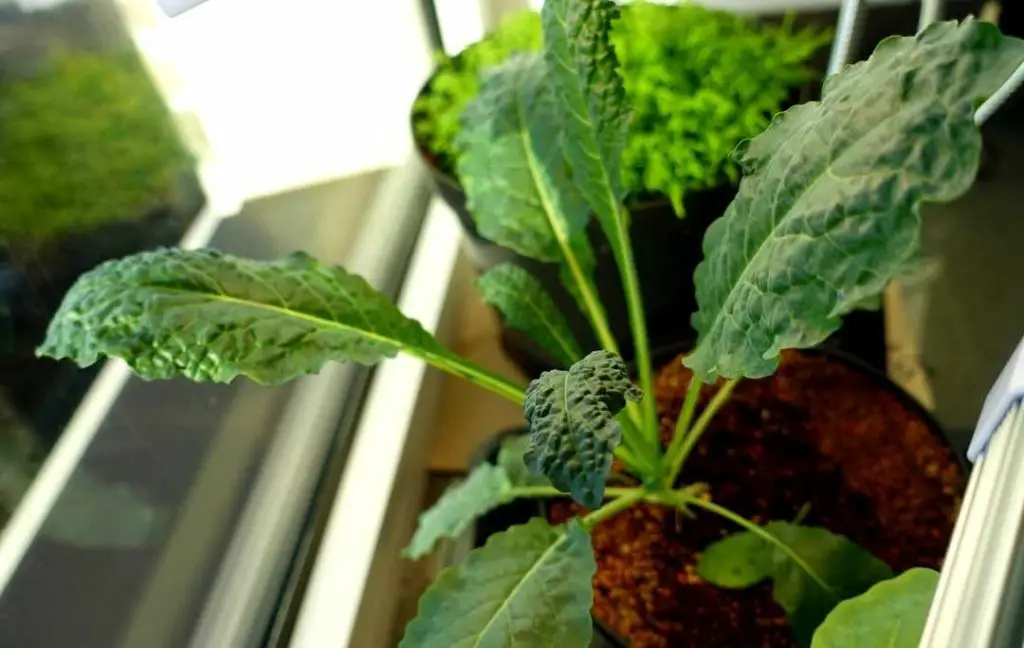
- The ideal temperature for the ideal growth is 65 Fahrenheit. In the summer season when the temperature is above 80 degrees Fahrenheit then you should move them for afternoon shade. You can also place them in a cool basement or garage, which are the best places in this season.
- The location of your pot is very important for the growth of kale plants. You should select such a location where your plants get 6 hours of sunlight with fresh air. Air circulation is very important for the growth of any plant.
- If you want to keep your plant productive then at the harvesting time you should take lower outer leaves and leave the center bud.
- A layer of mulch helps to retain the moisture within the soil.
- If you spread a layer of mulch then it will keep roots cool due to moisture. As you know kale plants love moist soil so you should use mulch for this purpose.
- Keep in your mind, the plants which grow in the pots dry much faster than those in the ground. It means they need more water. You should increase the frequency of water to avoid dry conditions.
- You will get soft and flavourful leaves if you make it possible that your plants get regular water. Over or under watering can become the reason for many diseases in your plants.
- Like water, containers also need more frequent fertilizing. If the roots of the kale plant find all the nutrients in the soil then they will not expand beyond the container wall. You should feed your kale plant regularly with continuous-release plant food.
- During the growing season, you can fertilize the kale plants every 7 to 14 days. You will find all the instructions on the packet. You can also use 10-10-10 water-soluble fertilizers.
MANAGING PESTS
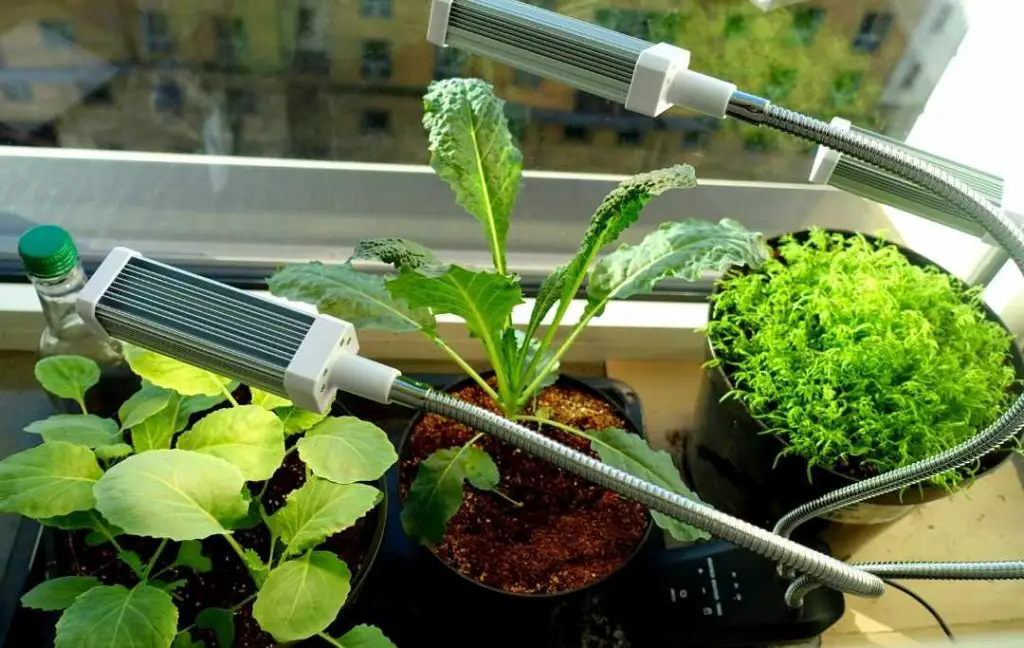
SPIDER MITES AND APHIDS
Although you are growing kale in a container or pot, it is susceptible to spider mites and aphids. You can control the population of these little monsters with a strong blast of water from a hose.
You should keep an eye on the kale plants so you can protect your plants from the invasion of these insects. You can also use insecticidal spray for this problem.
CATERPILLARS AND HARLEQUIN
If you see caterpillars and harlequin cabbage bugs then pick them from the plant. Soapy water is also the best solution to kill them.
SLUGS AND SNAILS
Handpicked is a solution to get rid of this problem but you can also place a layer of diatomaceous earth around the pot to prevent your plants from slugs.
CABBAGE MOTHS AND WORMS
Cabbage moths and worms can be a problem for your kale plants. Apply Bacillus thuringiensis to your plant. Only one application is enough and it’s safe to use it.
HARVESTING
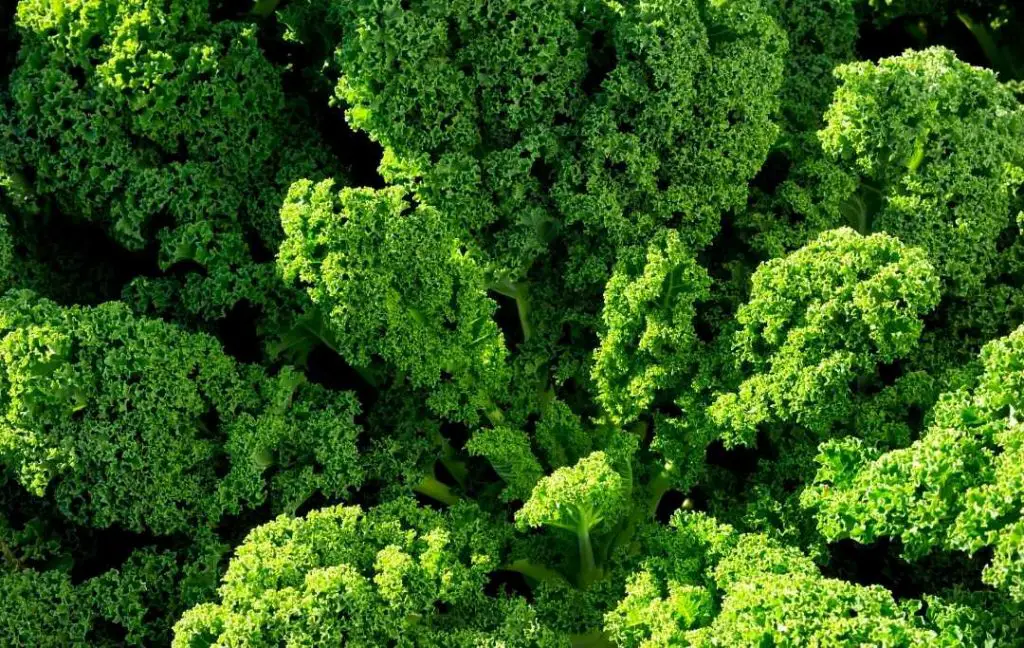
Normally, you can harvest kale within 65 to 80 days after planting. Continuous harvest encourages new growth.
- When seedlings have four sets of true leaves then you can transplant them to the pots. It’s up to you when to harvest the kale. You can pick the baby green or larger mature leaves. But you should pick the kale when the texture of leaves, ribs, and stems should be crisp and firm.
- Pick the lower leaves and leave the terminal bud of the plant. For continuous production, you should leave the upper leaves of the plant.
- If you see the leaves are blemished, wilted, brown, or yellow then it is a clear sign of insect damage. You should discard such leaves or place them in the compost pile.
- You should eat the kale when it is fresh. But if you want to store it for a long time then you should keep them in a refrigerator in a plastic bag for 7 to 10 days.
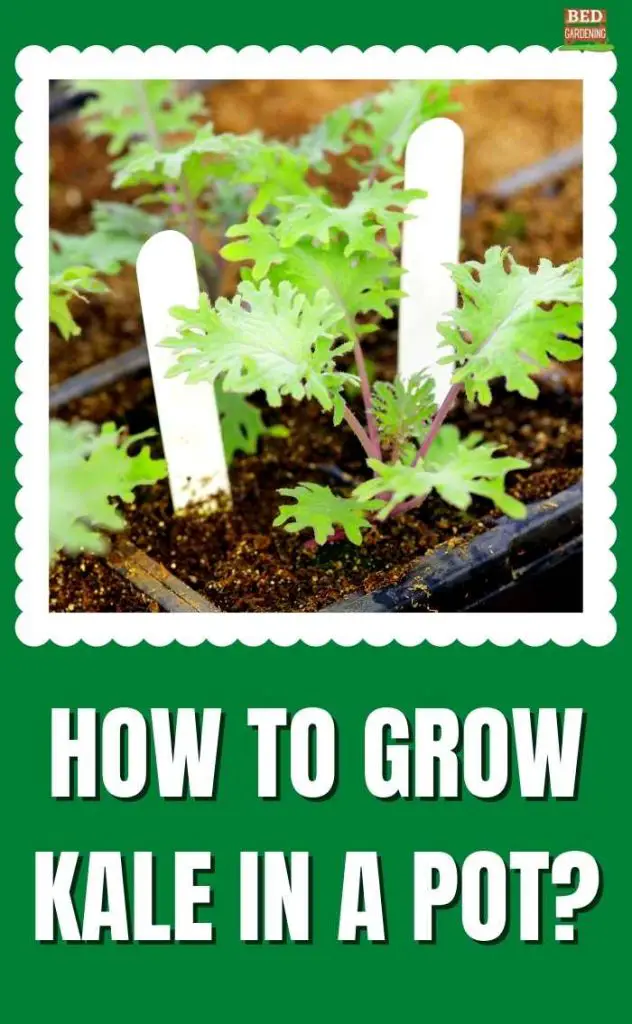
Read More
